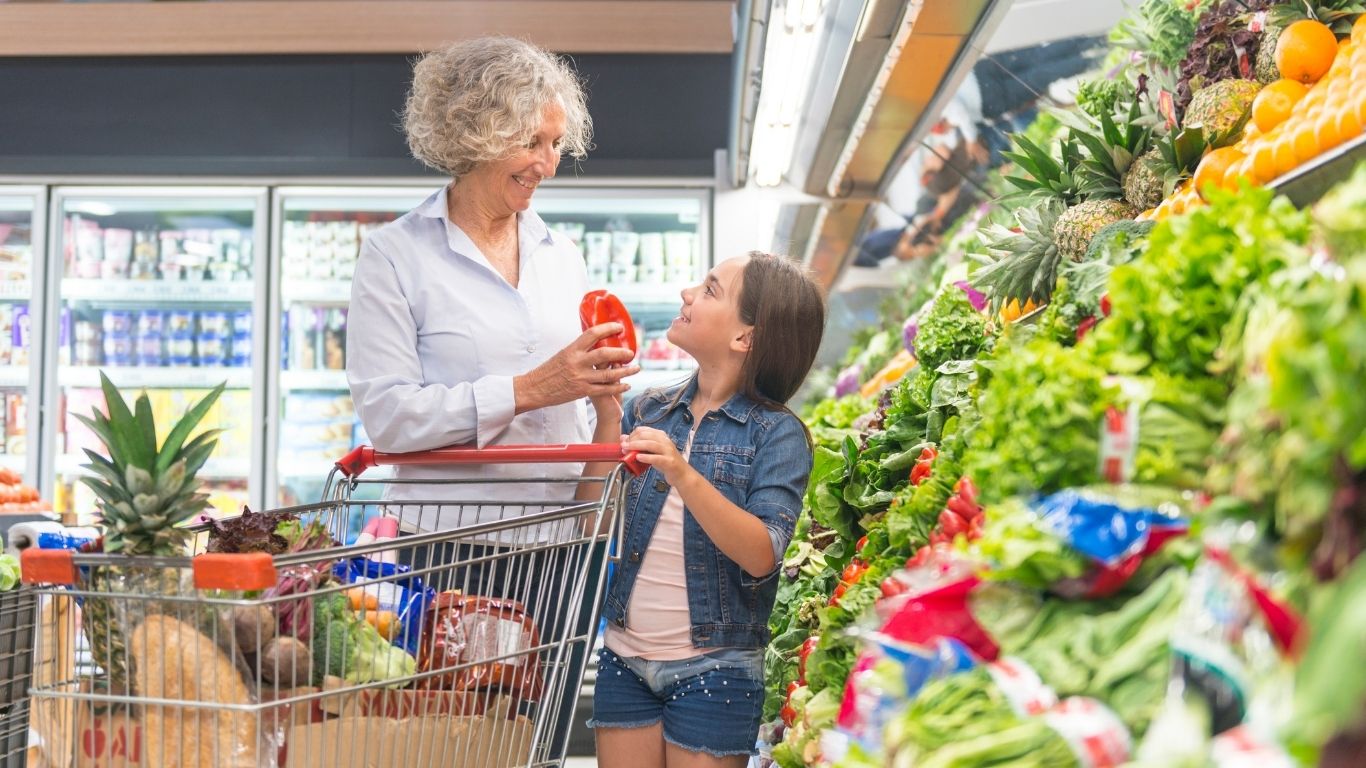Food marketing: How to reach different generations

How do different generations make purchasing decisions when it comes to choosing food and drink brands? And how can you adapt your brand and marketing strategy to appeal to and engage with your target consumers? Read on to see if your spending habits align with the profile of your own generation.
When thinking about your marketing activity for your food and drink brand, it's important to define your target market. Who is your product designed for? Which demographic is your target audience? What media do they use to shape their opinions, discover new products, or gather information?
Once you've worked out who your customers are, what is the best approach to take to tell them about your product? What motivates them to select one product over another?
To ensure that you deliver the right information about your food and drink product, to the right people, in the most effective way, it's beneficial to categorise your audience into six distinct groups. These are, of course, generalisations but the following information can help you begin to think about your customers in a different way.
Generation Z
1997-2012, aged 9 to 26
This generation has grown up surrounded by technology, making them ambitious digital natives. Unlike Millennials, they are less inclined to pursue higher education and accumulate debt, as they recognise the abundant availability of information diminishes the traditional value of degrees. Independent stores appeal more to them than brand loyalty, and they prioritise brand ethics.
This powerful generation understands the impact of their spending, surpassing Millennials in this regard. They embrace inclusivity, being the most gender non-specific generation, rejecting stereotypes for boys and girls.
Gen Z often shops via social media and is less inclined to make phone calls, as they are not accustomed to such communication as children. Their influence extends beyond their peers, shaping the purchasing habits of parents and even grandparents, marking it the first time younger generations sway the preferences of older ones.
Millennials
1980-1996, aged 27 to 42
Millennials are the trailblazing digital natives, reliant on Google for answers and marked by their self-sufficiency. They exude confidence, curiosity, and scepticism towards authority. Passionate about social causes and corporate responsibility, they are highly eco-conscious. With a significant portion holding higher education degrees and master’s qualifications, this generation bears substantial debt, impacting their spending habits and making them comparatively poorer than previous generations.
Enthusiastic about online shopping, they seek convenience and are swayed by deals and special offers. Many Millennials have younger families and display an omnichannel approach to buying, comfortable with phone calls, app purchases, online shopping, and in-person transactions. Their pet peeve is insufficient information on websites, e.g. missing FAQ sections or unclear delivery policies.
Generation X
1965-1980, aged 43 to 58
Born in the digital revolution, they witnessed technology's rapid growth whilst not being able to fully access it during their upbringing. They are renowned for their resourcefulness, logical thinking, and adept problem-solving skills. As the last latchkey kids, they experienced self-reliance from a young age, often taking care of siblings and handling responsibilities independently.
Their slower adoption of new trends doesn't diminish their brand loyalty; once they find something they like, they often stay loyal consumers. Although they have considerable spending power, they are cautious spenders who value reviews and testimonials, using social media mainly for listening and watching.
To engage with this generation, provide them with evidence, such as reviews, awards, and testimonials, to back up your product's claims.
The Baby Boomers
1946-1964, aged 59-76
This group of people is known for their dedication, self-reliance, and competitive spirit. This generation holds a significant share of the UK's disposable income and enjoys ample leisure time as many are now retired. They also benefit from better health than previous generations. Despite growing up in an analogue era, they have wholeheartedly embraced technology, particularly Facebook, WhatsApp, and even became the fastest-growing demographic on Instagram during the pandemic.
When seeking information, they prefer accessible customer service, and having a phone number available on websites is essential to avoid their frustration.
The Silent Generation
1928-1945, aged 77+
This generation was raised by Victorians, in a time when children were seen and not heard, which is why they’re known as the silent generation. The Silent Generation rarely complains, never over-explains, and refrains from sharing on social media. In fact, they generally avoid using social media altogether.
To reach them effectively, turn to traditional mediums like television or tabloids for marketing.
This article was based on a Business Innovation Masterclass, kindly run by AJ Sharp from Sharp Relations, on how to write an effective PR and marketing strategy for your food and drink brand.
Check out our events page to book a spot on one of our future masterclasses. These classes offer a wide range of topics to support the growth of your food and drinks business.
